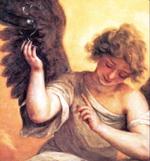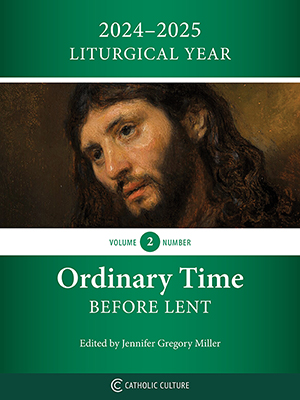Fathers of the Church
Letter LXIV. Festal
Description
Theodoret’s letters are a mine of information for the history of the fifth century, of the author’s life and of the history of dogma in general. This large correspondence is distinguished for its unpretentious learning, felicitous diction and perfect grace of style. It includes 14 specimens, including the present letter, of a new and interesting literary genre, the Festal Letters, as Theodoret himself calls them. They have nothing to do with the Festal Letters of the patriarchs at Alexandria (see the letters of St. Athanasius). Apparently, it was the etiquette at Antioch and Cyrus to exchange good wishes with friends, both clergy and lay, on the occasion of the great liturgical feasts. Most of Theodoret’s were sent out, not before, but after the holiday, which he speaks of as already passed. (Quasten)
Provenance
Theodoret of Cyrus (c. 393-466), the wise and zealous bishop of Cyrus, a small town near Antioch, was the last great theologian of the school of Antioch. Although he first considered Alexandrian Christology dangerous, and refused to condemn Nestorius until the Council of Chalcedon, his commitment to the correct doctrine of the Incarnation should not be questioned. As late as the 14th century more than 500 of his letters were extant, of which we still have 232.
by Theodoret in Unknown | translated by Blomfield Jackson
When the Master underwent the Passion of salvation for the sake of mankind, the company of the sacred Apostles was much disheartened, for they know not clearly what was to be the Passion's fruit. But when they knew the salvation that grew therefrom, they called the proclamation of the Passion glad tidings, and eagerly offered it to all mankind. And they that believed, as being enlightened in mind, cheerfully received it, and keep the Feast in memory of the Passion, and make the moment of death an opportunity for entertainment and festivity. For the close connexion with it of the resurrection does away with the sadness of death, and becomes a pledge for the resurrection of all. After just now taking part in this celebration, we send you these tidings of the feast as though they were some fragrant perfume, and salute your piety.
Taken from "The Early Church Fathers and Other Works" originally published by Wm. B. Eerdmans Pub. Co. in English in Edinburgh, Scotland, beginning in 1867. (NPNF II/III, Schaff and Wace). The digital version is by The Electronic Bible Society, P.O. Box 701356, Dallas, TX 75370, 214-407-WORD.
To Fathers of the Church home page






